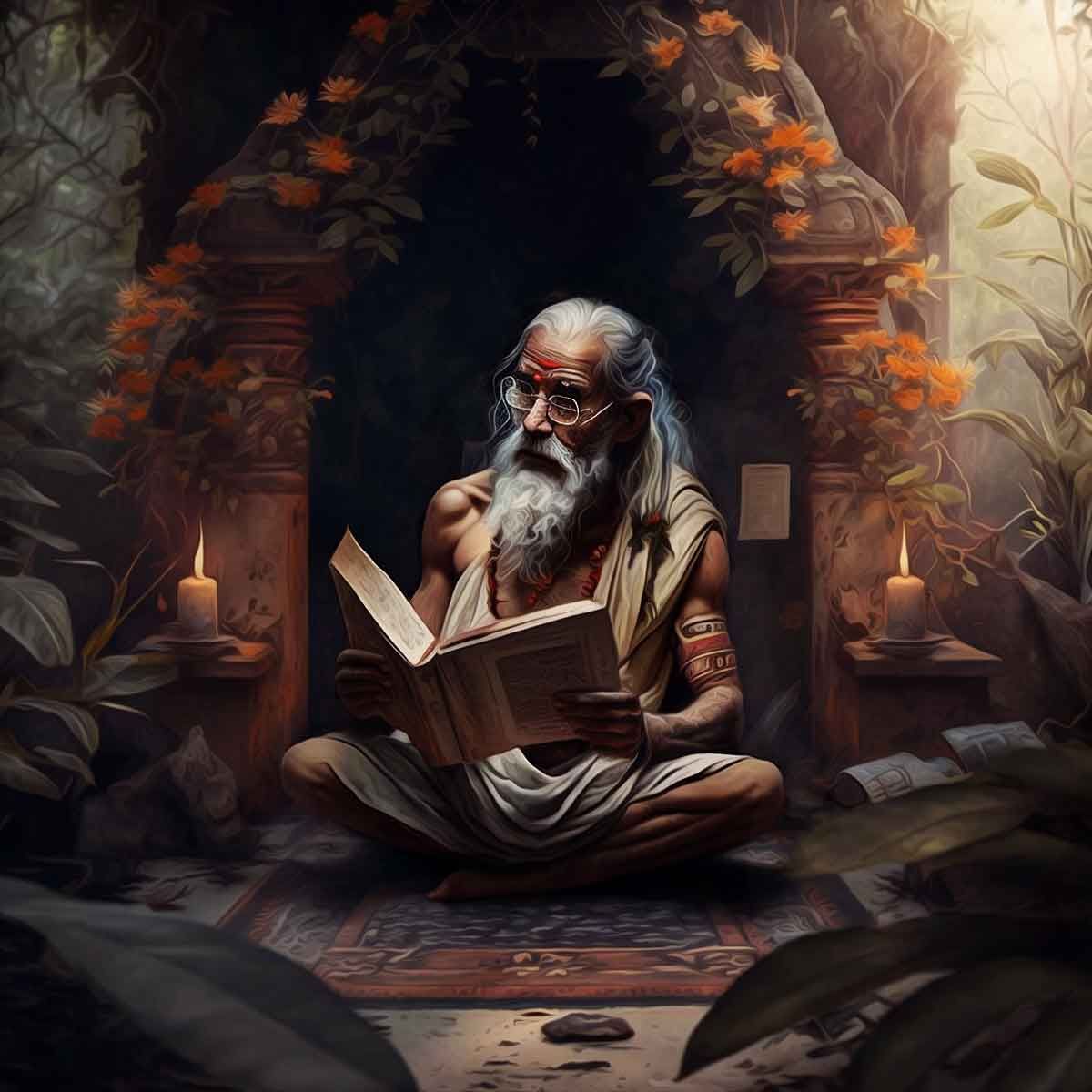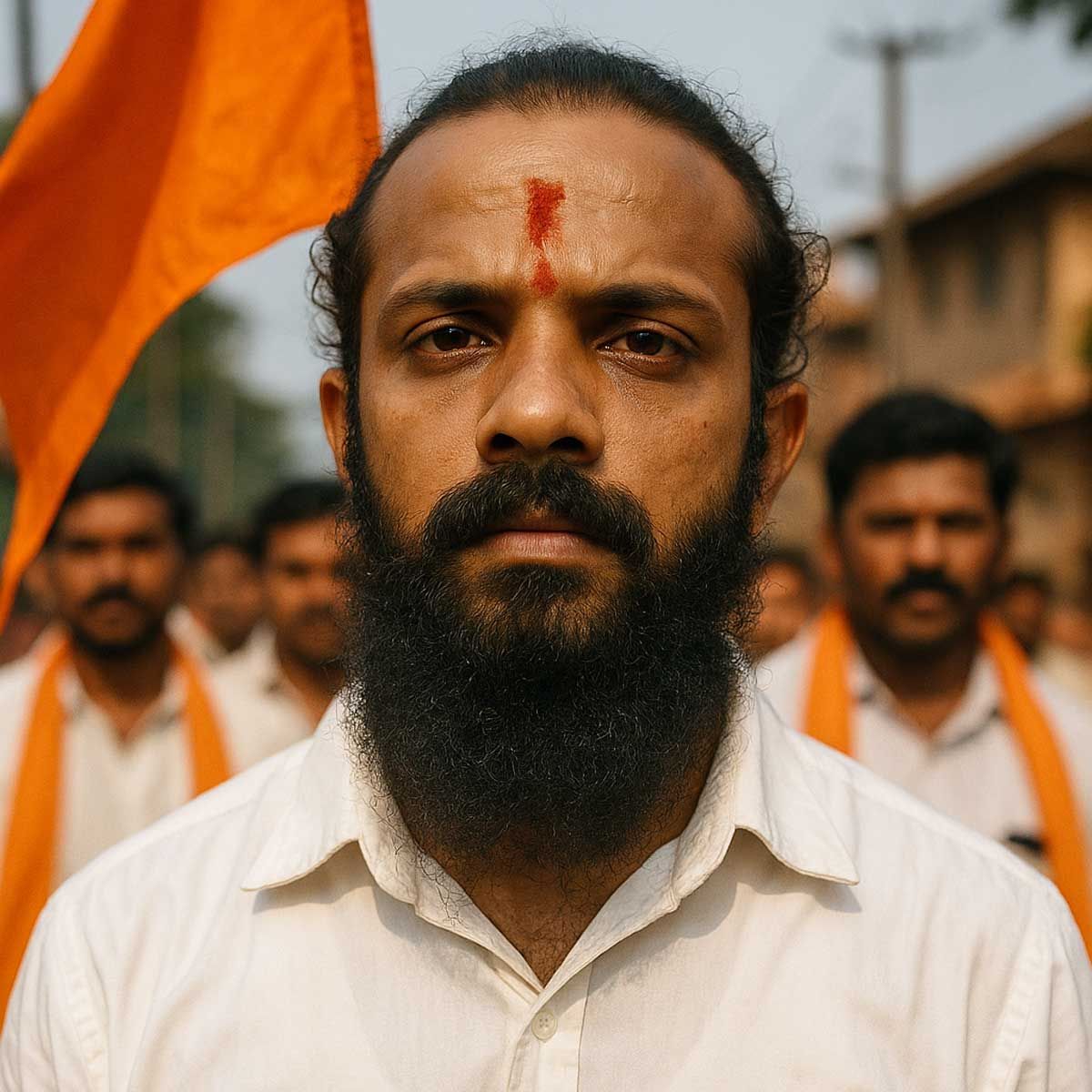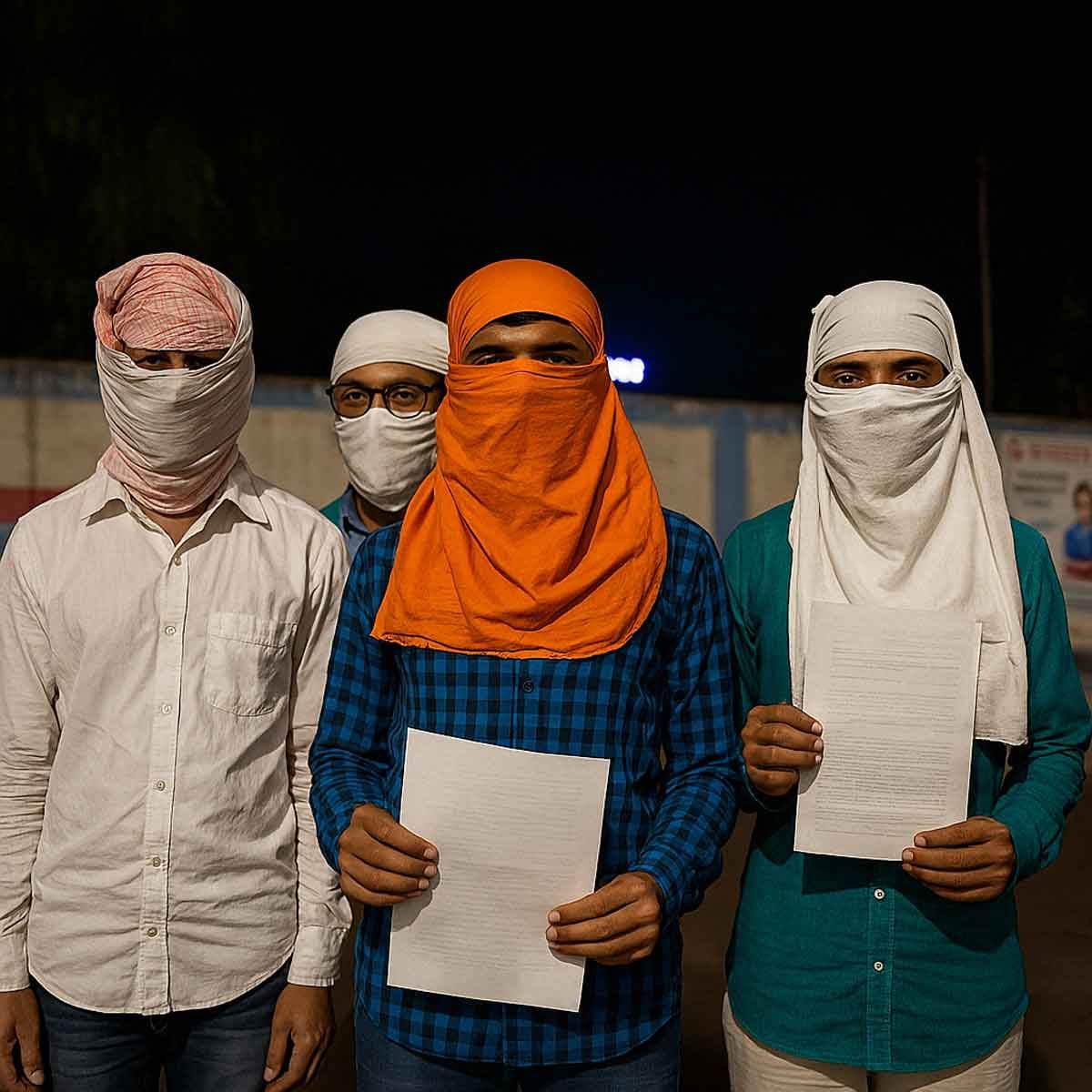More Coverage
Twitter Coverage
Satyaagrah
Written on
Satyaagrah
Written on
Satyaagrah
Written on
Satyaagrah
Written on
Satyaagrah
Written on
JOIN SATYAAGRAH SOCIAL MEDIA
"Three things cannot long be hidden: the sun, the moon, and the truth": It was not Isaac Newton but Rishi Kanad who first discovered "Laws of Motion" at least 2000 years before Newton in his Vaishesika Sutras, was also known as "Father of Atomic Theory"

The name ‘Sir Isaac Newton’ is so famous that everybody in this world is aware of it. He is famous for his ‘laws of motion’ and also the ‘law of gravity’. These laws form the basis of classical Physics.
But very few people may not know that the same idea was given by an Indian (Rishi Kanada) long before the era of Newton. The ancient Indian civilization has given birth to many theories of today’s science and technology, but the origin of these theories remained folded and hidden due to several reasons. What the world is thinking today, ancient Indians did it in the Vedic period.
Every civilization, which has brought development economically and socially, has attributed its success to science and technology. India is proud to have one of the oldest civilizations in the world with one-sixth of world's population and one-third of scientific and technological manpower.
The prehistory of India began with the vast Indus Valley civilization, which represented a cultural continuum. The excavations, which were done at Harappa and Mohenja-daro (now in Pakistan) in the 1930s by John Marshall of England, shows the age of India's oldest civilization as more than 2000 B.C.
It is interesting to note that at this dawn of India's history, she did not appear as an infant, but already grew up in many ways. The Indus Valley people created things not only of beauty but also of utilitarian and more typical emblems of modern civilizations. The high point of this civilization was the mature urban Harappan phase (2500-2000 B.C.A) characterized by well-planned cities, extensive external trade, manufacture of artistic seals, development of Harappan script, etc.
|
Phase of the Vedic period
The Vedic period precedes a new dimension to the issue of today‟s modern life. It is referred to knowing more about Vedic and Puranic Science. The cultural, religious, social, literary, and political life of the people of the Vedic period is well documented in four Vedas: Rig, Yajur, Sama, and Atharvana. The rishis or saints have tried to answer many of the mysteries of the world through their intuition and experience. Rig Veda is the oldest book whose main contents were composed in 4500 B.C.A. It was a compilation of 1028 hymns composed by a large number of authors over many generations.
India could not have continued a cultured existence for thousands of years. The search for the sources of India's strength and for her deterioration is long and complicated. Why this should have happened so is more difficult to unravel. When the history of the civilization of ancient India started? No historian, no scientist, no philosopher can tell the exact date and how much development of science was in ancient India.
As much research is going on, the date is going back and back. How much development of science in ancient India was? It is beyond our imagination. Today what we see in the development of science from missiles (without fail the target) to atomic bombs, from cars to airplanes/rockets, etc., all were written in our religious epics viz. Vedas, Ramayana, Mahabharata, Sri Bhagavad Gita, and other books of ancient India. From these books, we have come to know that Physics, Chemistry, Astronomy, Mathematics, Biology, Medical Science, and Astrological Science, all were very much developed in ancient India.
5000 years ago or more, the Indians were worshiping the 9 planets of our solar system, when the rest of the world did not know about the planet. We can say that today‟s development of science has achieved the clue from the science of ancient India. Many things in ancient India were developed when the rest of the world could not start to think. India discovered the shape of the Earth, the Earth moves round the Sun, and other information about the solar system and the universe when the people of the rest of the world had no idea or knowledge about these.
India had given world-class mathematic innovation from “ZERO (invented by Aryabhatt)” to “INFINITY (invented by Bhaskarachary)”. All these are reserved patents on the name of India. All the great innovations in mathematics had got found in India. All the ideas are destroyed or stolen or not documented.
Ancient Indians said, Earth is round in shape and revolves/moves around the sun, while others were busy claiming Earth is flat. But now, the people who laughed at Indians are agreeing that India was the hub of knowledge. Yes, Dr. George Gheverghese Joseph from the University of Manchester has revealed that several inventions and discoveries that were originally the work of Hindus were hijacked by foreigners at the course of time. So, ancient India is the origin of so many inventions and discoveries of today’s modern science and technology of the world. Here we discuss the origin of the law of motion, which is the backbone of classical Physics.
Vaisheshika or Vaiśeṣika (Sanskrit: वैशेषिक) is one of the six Hindu schools of philosophy in Ancient Vedic India. They were originally proposed by the sage Kaṇāda (or Kana-bhuk, literally, atom-eater) around the 2nd century BC.
Vaishesika sutras espouses a form of atomism and postulate that all objects in the physical universe are reducible to a finite number of atoms. Vaisheshika is one of the six Hindu schools of philosophy of India. Historically, it has been closely associated with the Hindu school of logic, Nyaya (syllogism, inference). The philosophers of this school used to debate on various subjects and try to achieve a conclusion.
Acharya Kaṇāda (Sanskrit: कणाद) was a Hindu sage and philosopher who was born in Prabhas Kshetra (near Dwaraka) in Gujarat, India. He composed his Sutras around 600 BCE.
His primary area of study was Rasavādam, considered to be a type of alchemy. He is said to have believed that all living beings are composed of five elements: water, fire, earth, air, ether.
Vegetables have only water, insects have water and fire, birds have water, fire, earth and air, and Humans, the top of the creation, have ether—the sense of discrimination (time, space, mind) are one.
He theorized that Gurutva (Hindi/Sanskrit for Gravity) was responsible for the falling of objects on the Earth.
Thus, he was the first person to identify and describe gravity (much ahead of Newton) after Prasnopanishad described it around 6000 BC.
|
Literature of Vaisheshika
The earliest systematic exposition of the Vaisheshika is found in the Vaiśeṣika Sūtra of Kaṇāda (or Kaṇabhaksha). This treatise is divided into ten books. The two commentaries on the Vaiśeṣika Sūtra, Rāvaṇabhāṣya and Bhāradvājavṛtti are no more extant.
Praśastapāda’s Padārthadharmasaṁgraha (c. 4th century) is the next important work of this school.
Though commonly known as bhāṣya of Vaiśeṣika Sūtra, this treatise is basically an independent work on the subject.
The next Vaisheshika treatise, Candra’s Daśapadārthaśāstra (648) based on Praśastapāda’s treatise is available only in Chinese translation. The earliest commentary available on Praśastapāda’s treatise is Vyomaśiva’s Vyomavatī (8th century). The other three commentaries are Śridhara’s Nyāyakandalī (991), Udayana’s Kiranāvali (10th century), and Śrivatsa’s Līlāvatī (11th century). Śivāditya’s Saptapadārthī which also belongs to the same period presents the Nyāya and the Vaiśeṣika principles as a part of one whole. Śaṁkara Miśra’s Upaskāra on Vaiśeṣika Sūtra is also an important work.
Invention of laws of motion
There are two great scientists behind the invention of the law of motion: (1) Rishi Kanada and (2) Sir Isaac Newton (1643-1727). We, all are familiar with Newton's Laws of Motion that Sir Isaac Newton, the physicist formulated the laws of motion first. He published these laws in his book "Philosophiæ Naturalis Principia Mathematica" on July 5, 1687.
But before Newton, the laws were discovered by Indian scientist and philosopher Rishi Kanada who had given Vaisheshika Sutra in 600 BCE which describes the relation between force and motion. We first discuss Newton's three laws of motion.
First law - Newton's first law states that every object will remain at rest or in uniform motion in a straight line unless compelled to change its state by the action of an external force.
Newton's first law of motion refers to as the law of inertia. Newton's first law of motion is often stated as an object at rest stays at rest and an object in motion stays in motion with the same speed and in the same direction unless acted upon by an unbalanced force. That is in an inertial frame of reference; an object either remains at rest or continues to move at a constant velocity unless acted upon by a force.
Second law - Newton's second law states that the rate of change of momentum of a body is directly proportional to the force applied, and this change in momentum takes place in the direction of the applied force.
In an inertial frame of reference, the vector sum of the forces P on an object is equal to the mass m of that object multiplied by the acceleration f of the object: P = mf (where mass m is constant). Newton's second law of motion pertains to the behavior of objects for which all existing forces are not balanced. The second law states that the acceleration of an object is dependent upon two variables: the net force acting upon the object and the mass of the object.
Third law - To every action, there is always an equal but opposed reaction or the mutual actions of two bodies upon each other are always equal and directed to contrary parts.
That is, when one body exerts a force on a second body, the second body simultaneously exerts a force equal in magnitude and opposite in direction on the first body.
Newton's laws of motion are three physical laws that together laid the foundation for classical mechanics. They describe the relationship between a body and the forces acting upon it, and its motion in response to those forces. More precisely, the first law defines the force qualitatively, the second law offers a quantitative measure of the force, and the third asserts that a single isolated force does not exist. These three laws have been expressed in several ways over three centuries.
|
Rishi Kanada’s Sutra: Now we discuss Rishi Kanada's Sutra (law)
Kanada's Sutra is also called Vaisheshika Sutra written in Sanskrit text authored by Rishi Kanada in ancient India. Rishi Kanda is also known as Kashyapa. Vaisheshika Sutra discusses the role of gravity in the falling of objects. It gives through the analogy of an arrow. First, it gives the mechanism of arrow projection in Sutra 5.1.17 (i.e., projectile).
The first action of an arrow is from impulse; the next action is the resultant energy produced by the first action, and similarly the next. Then it explains why it falls in the next Sutra. Now we discuss this in detail.
The Rishi Kanada’s Vaisheshika Sutra[5, 6, 11]
First Sutra
वेगः निमित्तववशेषात किमणो जायते | Vegah Nimitta Visheshat Karmano Jayate
Translation - Change of motion is due to impressed force. The law states that an object at rest tends to stay at rest and an object in motion tends to stay in motion with the same speed and in the same direction unless acted upon by an unbalanced force
Second Sutra
वेगः निमित्तापेऺात किमणो जायते नियतदिक क्रियाप्रबन्धहेतु | Vegah Nimitta Pekshat Karmano Jayate Niyatdik Kriya Prabandha Hetu
Translation - Change of motion is proportional to the impressed force and is in the direction of the force.
Third Sutra
वेगः संयोगववशेषववरोधी | Vegah Sanyog Vishesh Virodhi
Translation: Action and reaction are equal and opposite.
| Comparison between the laws of motion of Sir Isaac Newton and the Sutra of Rishi Kanada | ||
| Indicator | Newton’s Law | Rishi Kanada’s Sutra |
| Time of Invention | 1687 AD | 600 BCE |
| First Law | Every object will remain at rest or in uniform motion in a straight line unless compelled to change its state by the action of an external force. | “Vegah Nimitta Visheshat Karmano Jayate”. It means “Change of motion is due to impressed force”. |
| Comparison | There is no intrinsic difference between Newton‟s law of motion and the Kanada‟ Sutra. | |
| Second Law | Newton's second law states that the rate of change of momentum of a body is directly proportional to the force applied, and this change in momentum takes place in the direction of the applied force. | “Vegah Nimitta Pekshat Karmano Jayate Niyatdik Kriya Prabandha Hetu”. It means that the Change of motion is proportional to the impressed force and is in the direction of the force. |
| Comparison | Both laws are bearing the same meaning. | |
| Third Law | To every action, there is always an equal but opposed reaction. | “ Vegah Sanyog Vishesh Virodhi.” It means that action and reaction are equal and opposite. |
| Comparison | Both laws are the same and identical. | |
| Overall Explanations | Sir Isaac Newton published these laws in his book "Philosophiæ Naturalis Principia Mathematica" on July 5, 1687, while the exact time of Rishi Kanada‟ Sutra is not known. From the ancient religious books/epics, it is known to us that the time period of Rishi Kanada is 600 BCE. The invention of the Sutra by Rishi Kanada was before the time of innovation from “ZERO (invented by Aryabhatta)” to “INFINITY (invented by Bhaskaracharya)”. So far as I understand, on account of the scarcity of digits, Rishi Kanada could not formulate his Sutra. On the contrary, the time period of Sir Isaac Newton was so far modern and at this time many things were either invented or discovered. As a result, he could formulate his laws very easily in a scientific way. Now the question arises of how Newton‟s law and the Sutra of Rishi Kanada are more or less the same. | |
The people of the rest of the world knew that India was a home of Knowledge and Wealth on account of which many warriors attacked India so many times in search of wealth and many wise men came to India in search of knowledge. It is proved that ancient books of India were the root of many inventions/discoveries in the world. Sir Isaac Newton might search for this knowledge from India and formulated it in a scientific way or he could invent it independently. The actual fact remains mysterious. But all credits and respects go to Sir Isaac Newton and nothing to Rishi Kanada, though Rishi Kanada invented the entire laws before the 2000 years of Sir Isaac Newton. This is very painful for every Indian.
Also, Sir Isaac Newton formulated the laws of motion in a more scientific way with the help of digits and letters qualitatively as well as quantitatively while Rishi Kanada stated the laws qualitatively.
|
The Categories or Padārtha
According to the Vaisheshika school, all things which exist, which can be cognized, and which can be named are padārthas (literal meaning: the meaning of a word), the objects of experience. All objects of experience can be classified into six categories, dravya (substance), guṇa (quality), karma (activity), sāmānya (generality), viśeṣa (particularity), and samavāya (inherence). Later Vaiśeṣikas (Śrīdhara, Udayana, and Śivāditya) added one more category abhava (non-existence). The first three categories are defined as artha (which can be perceived) and they have real objective existence.
The last three categories are defined as budhyapekṣam (product of intellectual discrimination) and they are logical categories.
- Dravya (substance): The substances are conceived as 9 in number. They are, pṛthvī (earth), ap (water), tejas (fire), vāyu (air), ākaśa (ether), kāla (time), dik (space), ātman (self) and manas (mind). The first five are called bhūtas, the substances having some specific qualities so that they could be perceived by one or the other external senses.
- Guṇa (quality): The Vaiśeṣika Sūtra mentions 17 guṇas (qualities), to which Praśastapāda added another 7. While a substance is capable of existing independently by itself, a guṇa(quality) cannot exist so. The original 17 guṇas (qualities) are, rūpa (colour), rasa (taste), gandha (smell), sparśa (touch), saṁkhyā (number), parimāṇa (size/dimension/quantity), pṛthaktva (individuality), saṁyoga (conjunction/accompaniments), vibhāga (disjunction), paratva (priority), aparatva (posteriority), buddhi (knowledge), sukha (pleasure), duḥkha (pain), icchā (desire), dveṣa (aversion) and prayatna (effort). To these Praśastapāda added gurutva (heaviness), dravatva (fluidity), sneha (viscosity), dharma (merit), adharma (demerit), śabda (sound) and saṁkāsra (faculty).
- Karma (activity): The karmas (activities) like guṇas (qualities) have no separate existence, they belong to the substances. But while a quality is a permanent feature of a substance, an activity is a transient one. Ākāśa (ether), kāla (time), dik (space) and ātman (self), though substances, are devoid of karma (activity)
- Sāmānya (generality): Since there are plurality of substances, there will be relations among them. When a property is found common to many substances, it is called sāmānya.
- Viśeṣa (particularity): By means of viśeṣa, we are able to perceive substances as different from one another. As the ultimate atoms are innumerable so are the viśeṣas.
- Samavāya (inherence): Kaṇāda defined samavāya as the relation between the cause and the effect. Praśastapāda defined it as the relationship existing between the substances that are inseparable, standing to one another in the relation of the container and the contained. The relation of samavāya is not perceivable but only inferable from the inseparable connection of the substances.
|
The atomic theory
An interesting story states that this theory occurred to him while he was walking with food in his hand. As he nibbled at the food in his hand, throwing away the small particles, it occurred to him that he could not divide the food into further parts and thus the idea of a matter which cannot be divided further came into existence. He called that indivisible matter anu, i.e. atom. He also stated that anu can have two states – Absolute rest and a State of motion.
The early Vaiśeṣika texts presented the following syllogism to prove that all objects i.e. the four bhūtas, pṛthvī (earth), ap (water), tejas (fire) and vāyu (air) are made of indivisible paramāṇus (atoms): Assume that the matter is not made of indivisible atoms and that it is continuous.
Take a stone. One can divide this up into infinitely many pieces (since the matter is continuous). Now, the Himalayan mountain range also has infinitely many pieces, so one may build another Himalayan mountain range with the infinite number of pieces that one has. One begins with a stone and ends up with the Himalayas, which is a paradox – so the original assumption that matter is continuous must be wrong, and so all objects must be made up of a finite number of paramāṇus (atoms).
According to the Vaiśeṣika school, the trasareṇu (dust particles visible in the sunbeam coming through a small window hole) are the smallest mahat (perceivable) particles and defined as tryaṇukas (triads). These are made of three parts, each of which are defined as dvyaṇuka (dyad). The dvyaṇukas are conceived as made of two parts, each of which is defined as paramāṇu (atom). The paramāṇus (atoms) are indivisible and eternal, they can neither be created nor destroyed.[13] Each paramāṇu (atom) possesses its own distinct viśeṣa (individuality).
The measure of the partless atoms is known as parimaṇḍala parimāṇa. It is eternal and it cannot generate the measure of any other substance. Its measure is it's own absolutely.
Of course, knowledge of Atoms and Molecules was given through Bhagavata Purana and in Rig Veda, where cloning incidents were described.
J. Robert Oppenheimer, the father of the Atom bomb invented it after the study of the Hindu Epic Vedas, Puran, and Srimad Bhagavad Gita. The destruction through the application of Brahmmastra and other different weapons in the war of Kurukshetra and Lanka was studied by him. His mission under a team of scientists was named "Trinidi" from 1939 to 1945 under his leadership. The first atom boom was tested on July 16, 1945.
Now John Dalton is the father of today's application of atom boom. Rishi Kanada wrote the law of atom boom in the Vedas. The famous historian JN Kolebrok wrote in his book that Rishi Kanada had more knowledge in comparison to European scientists[7, 8].
The ancient genius Aryabhata calculated the exact value of Π and invented "0" (Zero) first. He first examined that the earth moves around the sun. He discovered it one thousand years before European scholars discover it. Aryabhata was born in Kusumpur village in Bihar of India. He wrote the book "Aryabhataiyo" in 600 BC. The book is full of scientific knowledge[9].
From the above discussion, it is a fact that ancient India was the leader of science in all fields of the world. But the invention and discovery in India were not properly documented. If we compare today's science with that day's science, we see that the science in ancient India was more developed than today's science in some fields.
For example, Khajuraho Temples, one of the most beautiful medieval monuments built by the Chandella ruler between AD 900 and 1130, the Iron Pillar nearby Qutub Minar, and other many historical monuments in India are unbelievable on the ground that how did the then people construct?
In the last 1000 years, we, the Indians were suppressed by different Muslim Dynasties and last of all, the English (190 years) on account of which we could not develop our own ancient science. The British imposed their Western education upon us but never tried to revive our ancient knowledge. If our ancient knowledge would have revived and developed, our position might have become unique in the world. After getting independence from the control of foreign rulers, the sociological clutches are released slowly. So India is making strides to become self-reliant in every field of science.
References:
- Mr. Avinandan Krishna Mandal. "Origin of Laws of Motion (Newton‟s Law): An Introspective Study.” American Journal of Engineering Research (AJER), vol. 9(07), 2020, pp. 87-92
- OP Jaggi, Dawn of Indian Science, Atma Ram and Sons, Delhi, 1969
- Vidya, R. (2001): “Science in India: Past, Present and Future”, November 18, 2001(www.folk.uio.no/ravindrv)
- Wazir Hasan Abdi, Glimpses of Mathematics in Medieval India, History of Indian Science, Technology and Culture, Vol III, part I Oxford University Press, New Delhi,2000, p. 51
- www.booksfact.com › science › ancient-science › vaish (accessed on 10. 06.2020). [6]. Vaishesika Sutras by Kanada describe Laws of Motion (accessed on 10. 06.2020)
- http://postcard.news/omg-manchester-university-confirms-isaac-newton-stole-gravity-theory-hindus
- http://the-hidden-sector.blogspot.in/2011/10/india-discover-laws-of-motion
- https://en.wikipedia.org › wiki › Aryabhata
- postcard.news › omg-manchester-university-confirms-is
- http://the-hidden-sector.blogspot.com/2011/10/india-discovered-laws-of-motion-before.html
 Support Us
Support Us
Satyagraha was born from the heart of our land, with an undying aim to unveil the true essence of Bharat. It seeks to illuminate the hidden tales of our valiant freedom fighters and the rich chronicles that haven't yet sung their complete melody in the mainstream.
While platforms like NDTV and 'The Wire' effortlessly garner funds under the banner of safeguarding democracy, we at Satyagraha walk a different path. Our strength and resonance come from you. In this journey to weave a stronger Bharat, every little contribution amplifies our voice. Let's come together, contribute as you can, and champion the true spirit of our nation.
 |  |  |
| ICICI Bank of Satyaagrah | Razorpay Bank of Satyaagrah | PayPal Bank of Satyaagrah - For International Payments |
If all above doesn't work, then try the LINK below:
Please share the article on other platforms
DISCLAIMER: The author is solely responsible for the views expressed in this article. The author carries the responsibility for citing and/or licensing of images utilized within the text. The website also frequently uses non-commercial images for representational purposes only in line with the article. We are not responsible for the authenticity of such images. If some images have a copyright issue, we request the person/entity to contact us at This email address is being protected from spambots. You need JavaScript enabled to view it. and we will take the necessary actions to resolve the issue.
Related Articles
- "Truth will ultimately prevail where there is pains taken to bring it to light": We studied that speed of light was discovered by Ole Roemer (1676), well in reality Rig Veda contains the accurate speed of light in one of its shlokas thousands of years ago
- "You are what you believe in. You become that which you believe you can become": Google Software Engr. launches GitaGPT that deploys AI to answer your questions about life problems, “What if you could talk to Bhagavad Gita? To Lord Krishna himself?”
- "When we bring what is within out into the world, miracles happen": Built by the Rajput king Sawai Jai Singh II in 1734, UNESCO World Heritage site Jantar Mantar, Jaipur is an astronomical observatory, which features the world’s largest stone sundial
- "Its a desirable thing to be well-descended, but the glory belongs to our ancestors": An artist from Pakistan went viral for using artificial intelligence to reimagine life in Mohenjo Daro, one of the most striking monuments from the dawn of civilization
- "Symbols are powerful because they are the visible signs of invisible realities": Real Sindoor comes from a tree, a low-height tree that finds mention in our scriptures. Seeds from the tree are crushed to make fine powder and were used by Sita and Hanuman
- "You are what you believe in. You become that which you believe you can become": J Robert Oppenheimer, a theoretical Physicist recited a quote from Bhagavad Gita after witnessing first Nuclear explosion - "Now I am become Death, the destroyer of worlds"
- "It is through an unbroken chain of witnesses that we come to see the face of reality": The first ever recorded nose surgery was done by Sushruta who is also regarded as the father of surgery, wrote one of the world's earliest works on medicine & surgery
- "Culture is the widening of the mind and of the spirit": Origin of the timepiece AM and PM - Arohanam Martandasaya means the ascension (rise) of the sun, Patanam Martandasaya means the inclination of the sun
- “Genius is never understood in its own time”: Do you know when you put your debit card in ATM and ask for money, machine arranges the money before giving it to you using Srinivasa Ramanujan’s partition theory, celebrated as National Mathematics Day
- Legend of Maharishi Charaka also known as The father of Ayurveda: Earliest school of medicine known to mankind is Ayurveda
- Ekapada, unveiling the mystery of water - A journey into its quantum vibrations, the subtle energies it carries, and its symbolic representation in ancient temples discovering intersection of science, spirituality and timeless wisdom encoded in the atom
- "Sringara Prakasa - Sanskrit poetry": Classical theater, dancers (Bharatanatyam, Odissi, Mohiniyattam) refer to Sringara as 'the Mother of all rasas, one of the nine rasas, usually translated as erotic love, romantic love, or as attraction or beauty
- "Varahamihira - ancient Astrologer, Astronomer and Mathematician": His encyclopaedic knowledge and lively presentation of subjects, as dry as astronomy, made him a celebrated figure, discovered trigonometric formulas and Pascal’s triangle
- "Sanskrit is the language of philosophy, science, and religion": A Neuroscientist, James Hartzell explored the "Sanskrit Effect" and MRI scans proved that memorizing ancient mantras increases the size of brain regions associated with cognitive function
- "Where is all the knowledge we lost with information": Father of Surgery - World`s First Surgeon was Maharishi Sushruta who performed surgeries on nose, ears, bladder, cataracts, fistula, joints, and hemorrhage more than 2600 ago with surgical instruments




























